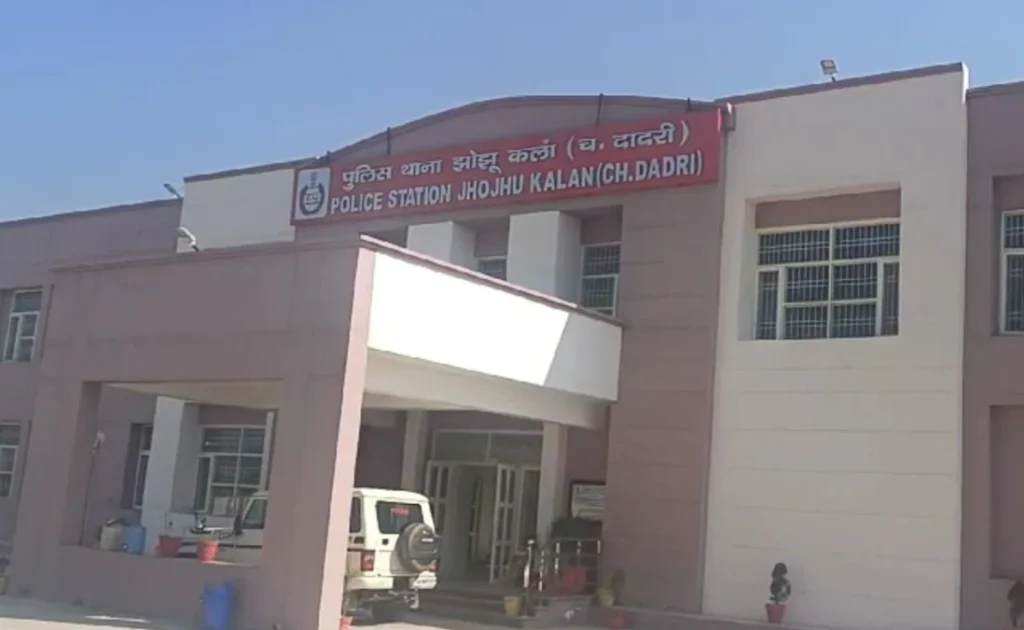“Explore Charkhi Dadri District, a blend of rich heritage, vibrant culture, and rapid development. Discover its history, attractions, and promising future today!”

Charkhi Dadri District: A Glimpse into Its Rich Heritage and Vibrant Present
Nestled in the northern state of Haryana, India, Charkhi Dadri District stands as a testament to the historical significance and evolving modernity of the region. With an area of approximately 2,187 square kilometers and a diverse population, the district has a unique blend of cultural heritage, economic growth, and social development.
The district’s history dates back to ancient times, with archaeological evidence suggesting human habitation during the Indus Valley Civilization. Over the centuries, Charkhi Dadri witnessed the rise and fall of several empires, leaving behind traces of their influence in the form of forts, temples, and ruins. The region was an important center for trade and commerce, connecting various trade routes that crisscrossed northern India.
In recent decades, Charkhi Dadri has undergone significant transformation, transitioning from an agrarian economy to a more diverse economic landscape. Agriculture remains a crucial sector, with crops like wheat, mustard, and millets being the mainstay. However, the district has also embraced industrialization, hosting manufacturing units ranging from ceramics and textiles to automobile parts. This shift has not only boosted the local economy but has also opened up employment opportunities for the burgeoning population.
The district’s administrative center, Charkhi Dadri town, bustles with commercial activity. The local markets are a vibrant tapestry of colors and sounds, offering everything from traditional handicrafts to modern consumer goods. This juxtaposition of the old and new is emblematic of the district’s ability to preserve its heritage while embracing progress.
Culturally, Charkhi Dadri is a melting pot, with people from various communities and backgrounds coexisting harmoniously. Festivals like Diwali, Holi, and Eid are celebrated with equal enthusiasm, highlighting the spirit of unity among its residents. The region’s folk music and dance forms, such as the Phag Dance and the Gugga Dance, are a reflection of the local customs and beliefs.
The district’s educational infrastructure has also seen substantial growth, providing the youth with opportunities for learning and skill development. Schools and colleges dot the landscape, promoting both traditional education and vocational training. This has contributed to a more informed and empowered population, ready to embrace the challenges of the modern world.
Charkhi Dadri’s scenic beauty adds to its allure, with picturesque landscapes that include rolling fields, rural vistas, and small hillocks. Nature enthusiasts and travelers looking for offbeat destinations are drawn to the district’s serene surroundings.
Famous Places in Charkhi Dadri District
Charkhi Dadri District boasts a range of fascinating attractions that showcase its historical, cultural, and natural treasures. Here are some of the famous places to explore:
Bhindawas Lake: This expansive freshwater lake is one of the largest in Haryana and serves as an important wintering ground for migratory birds. It’s a haven for birdwatchers and nature enthusiasts, offering a tranquil escape surrounded by lush greenery.
Khera Baba: A revered religious site, Khera Baba is a temple complex dedicated to Baba Khera. The complex attracts pilgrims seeking blessings and solace, and its serene surroundings make it a peaceful retreat.
Khatu Shyam Mandir: This temple dedicated to Lord Shyam, a manifestation of Krishna, draws devotees from across the region. The temple’s architecture and religious significance make it a popular spiritual destination.
Baba Khetanath Temple: Another prominent religious site, this temple honors Baba Khetanath, a local deity. It is known for its unique architecture and hosts an annual fair that attracts a large number of visitors.
Dada Khera: This historical site houses the ruins of an ancient fort and showcases the district’s historical legacy. The remnants of the fort offer a glimpse into the region’s rich past and the architectural prowess of bygone eras.
Charkhi Dadri Railway Junction: A significant railway hub, this junction played a vital role in the transportation of goods and people. It stands as a reminder of the district’s contribution to the region’s connectivity.
Charkhi Dadri Grain Market: Reflecting the economic essence of the district, this bustling grain market is a hub of trading activities. It provides a unique insight into the agricultural backbone of the region.
Sethani Ka Johara: An ancient reservoir built during the reign of Rani Sethani, this historic water body showcases the engineering ingenuity of the past. The reservoir’s architectural design and historical importance make it an intriguing site.
Shri Hanuman Mandir, Bond: Dedicated to Lord Hanuman, this temple holds cultural and religious significance. Its peaceful ambiance and spiritual aura attract devotees and tourists alike.
Local Markets: Exploring the local markets in Charkhi Dadri town offers a chance to experience the district’s vibrant culture. From traditional handicrafts to modern commodities, the markets are a microcosm of local life.
These famous places provide a glimpse into the diverse facets of Charkhi Dadri District. Whether you’re interested in history, spirituality, nature, or local culture, the district offers a range of experiences that cater to various interests and preferences.
Read More :-